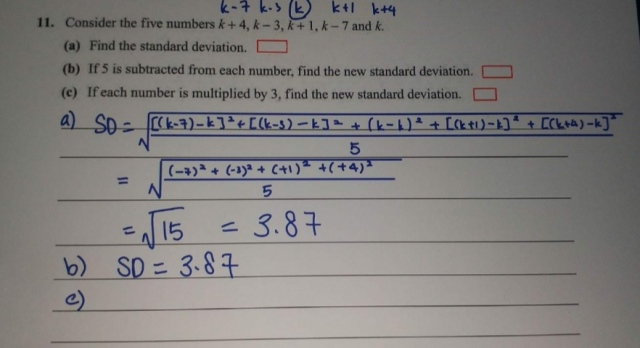Maths problem: how to do (a), (b) thanks?
2020-09-25 9:54 pm

回答 (1)
2020-09-25 10:56 pm
✔ 最佳答案
(a)First of all, we calculate the mean as
μ
= [(k + 4) + (k - 3) + (k + 1) + (k - 7) + k] ÷ 5
= k - 1.
The variance is then
σ²
= [(k + 4 - μ)² + (k - 3 - μ)² + (k + 1 - μ)² + (k - 7 - μ)² + (k - μ)²] ÷ 5
= [(5)² + (-2)² + (2)² + (-6)² + (1)²] ÷ 5
= (25 + 4 + 4 + 36 + 1) ÷ 5
= 70 ÷ 5
= 14.
The s.d. is σ = √14.
(b)
Standard deviation is a measure of dispersion.
For each datum added to the same number, the dispersion among the data remains the same, so the new s.d. is still σ = √14.
(c)
For each datum multiply to the same number, the dispersion among the data is also scaled by the same number, so the new s.d. is 3σ = 3√14.
收錄日期: 2021-04-24 08:05:00
原文連結 [永久失效]:
https://hk.answers.yahoo.com/question/index?qid=20200925135427AAAm8Lt
